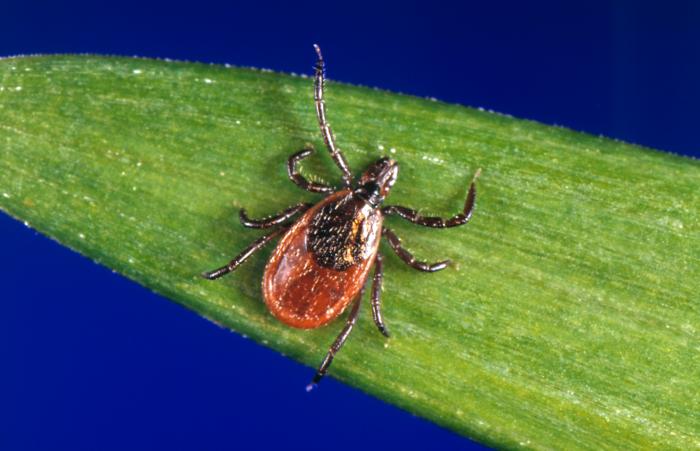Tips To Handle Those Rare Tick-Borne Diseases

“The biggest myth about tick-borne diseases is that every tick carries the Lyme disease pathogen, when in fact, only one tick species in the Eastern U.S. is capable of transmitting the pathogen, Ixodes scapularis, the black-legged or deer tick,” said Phil Kaufman, a University of Florida veterinary entomologist.
Kaufman, an associate professor at the UF Institute of Food and Agricultural Sciences, cited three tick-borne diseases we should know about.
Those diseases are:
• Lyme disease: In Florida, 673 cases of Lyme disease were reported from 2002 to 2011, according to the Florida Department of Health. That’s only 67 cases per year, compared to 27,000 cases in the U.S. in 2013. Of the Florida cases, 77 percent were acquired by people when traveling to other states.
• Rocky Mountain Spotted Fever: In Florida, the reported incidence has increased markedly in recent years, possibly due to increased disease awareness and reporting, Kaufman said. Some 163 cases of the fever were reported from 2002 through 2011, and 77 percent were acquired in Florida. Again, most were in north and central Florida. Cases of Rocky Mountain Spotted Fever are reported year-round, though peak transmission is typically during the summer.
• Ehrlichiosis (HME)/Anaplasmosis (HGE): In Florida, 89 cases of Ehrlichiosis/HME were reported from 2002 through 2011. Of those, 33 cases of Anaplasmosis/HGA were reported. The majority of HME cases – 73 percent — are reported as being acquired in Florida, primarily in the north and central parts of the state. Like Lyme disease, HGA has less than half — 45 percent — of cases classified as Florida-acquired as reported newswise
How can we prevent these tick-borne diseases?
The Florida Department of Health advises you to apply repellent that contains 20 to 30 percent of DEET to prevent ticks from attaching to your skin. Other repellents registered by the U.S. Environmental Protection Agency may be found at: cfpub.epa.gov
Other tips:
• Permethrin can be used on clothing, shoes, tents and gear and remains protective through several washings.
• Check your body and your child’s body for ticks after spending time in a place where ticks are likely to be found such as wooded areas or places with tall grass and leaf litter.
• Check your pet for ticks. Talk to your veterinarian about products that keep ticks off your pets.
• Dress so your skin is covered in light-colored clothing when you are in an area when ticks might be present. This makes ticks easier to see.
• Prevent tick infestations around your home by landscaping your yard to be a tick-free zone.
• Shower soon after being outdoors. Showering within two hours of coming indoors has been shown to reduce your risk of being bitten by a tick.
• Tumble clothes in a dryer on high heat for an hour to kill remaining ticks.
Dr. Shehla Islam, a board-certified infectious disease physician at UF Health, said symptoms of a tick-borne disease vary, depending on the illness. They frequently show up as fever, headache and joint pain and a rash.
Upper respiratory symptoms are not common with these illnesses, so if a patient has a history of exposure to ticks, and he or she exhibits symptoms for several days with no clear cause, people should see their primary care physician, Islam said.
“They should go to the emergency room if they’re severely ill,” she said. “These are not contagious diseases, for the most part.”
